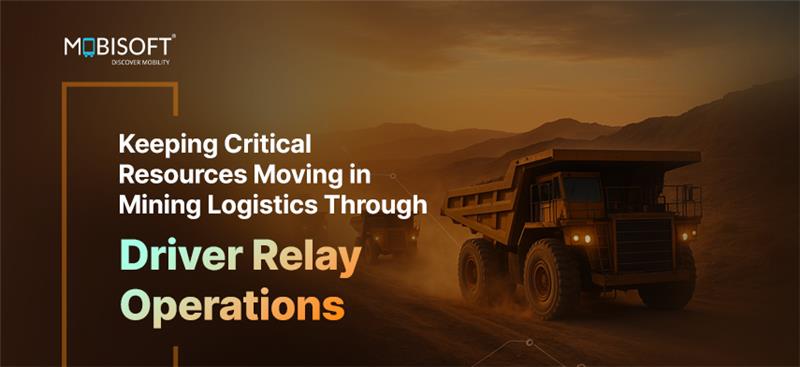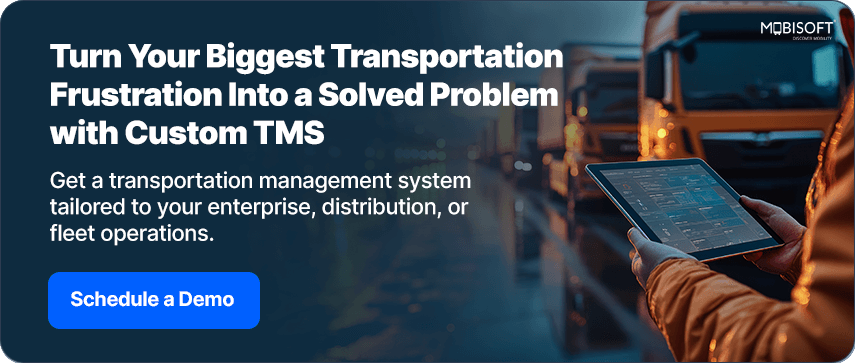Keeping Critical Resources Moving in Mining Logistics Through Driver Relay Operations

Every hour, thousands of tons of extracted ore leave remote mining sites, only to face their toughest journey: a multi-hundred-kilometer trek to ports, smelters, or factories. In mining-rich regions like Western Australia or the Southwest U.S., these mining logistics operations often stretch 800 to 1,200 kilometers across rugged terrain.
Yet, despite automation at mine sites, this overland leg still runs into costly slowdowns. A single long-haul truck held up due to mandatory rest breaks, driver fatigue, or handover delays can derail tightly synchronized production schedules, creating ripple effects that delay exports, disrupt contracts, and strain already-thin profit margins.
In this high-stakes environment, driver relay operations, supported by intelligent mining fleet management solutions, are emerging as one of the most effective ways to keep critical resource transportation moving without pause safely, compliantly, and predictably.
For more visibility and control in long-haul operations, explore our Transportation Management System for mining logistics
The Stakes of Mining Logistics
Logistics in the mining industry is the backbone of operational resilience and business performance for mining leaders. When a single truckload of ore doesn’t arrive on time, the consequences cascade:
- Processing schedules are disrupted, delaying production.
- Stockpile congestion creates extra handling costs and demurrage.
- Export targets slip, weakening buyer confidence and contractual footing.
To underline the scale of the challenge:
- In 2022, U.S. mines moved 1.3 billion tons of coal. Trucks carried it to power plants and industrial clients. (EIA)
- In 2023, global iron ore demand passed 2.6 billion metric tons. Steel, infrastructure, and manufacturing drove this growth. (World Steel Association).
Even small inefficiencies in mining transport logistics, a few percent of OPEX, lead to massive losses. According to industry studies, even seemingly small adjustments in freight or inventory strategy can unlock millions in value across a mining operation. (Logistics management for mining companies)
On top of that, mining leaders know from experience – shifting value chains, tighter margin pressure, and global supply shifts mean logistics reliability is no longer optional; it’s mission-critical.
As one logistics executive puts it:
“Today’s logistics leaders must deliver minute-by-minute tracking, cost efficiency, and problem anticipation across global routes.” (Stanton Chase)
So when we say “keeping resources moving,” we’re addressing an urgent leadership agenda: how to drive reliability, cost efficiency, and resilience without excessive incremental capex.

The Challenges of Long-Haul Mining Transport
Getting minerals from remote mines to processing plants is not as simple as sending out a truck. These resource movement in mining routes stretch over thousands of kilometers, through harsh environments and limited infrastructure.
The Simple Reality
Drivers can’t drive forever. Trucks can’t be everywhere. Roads aren’t always ready. And delays cost money.
Now let’s look at what makes long-distance resource transport in mining so difficult:
Read More: https://mobisoftinfotech.com/resources/blog/transportation-logistics/driver-relay-operations-mining-logistics
- AI
- Vitamins
- Health
- Admin/office jobs
- News
- Art
- Causes
- Crafts
- Dance
- Drinks
- Film
- Fitness
- Food
- Παιχνίδια
- Gardening
- Health
- Κεντρική Σελίδα
- Literature
- Music
- Networking
- άλλο
- Party
- Religion
- Shopping
- Sports
- Theater
- Wellness


